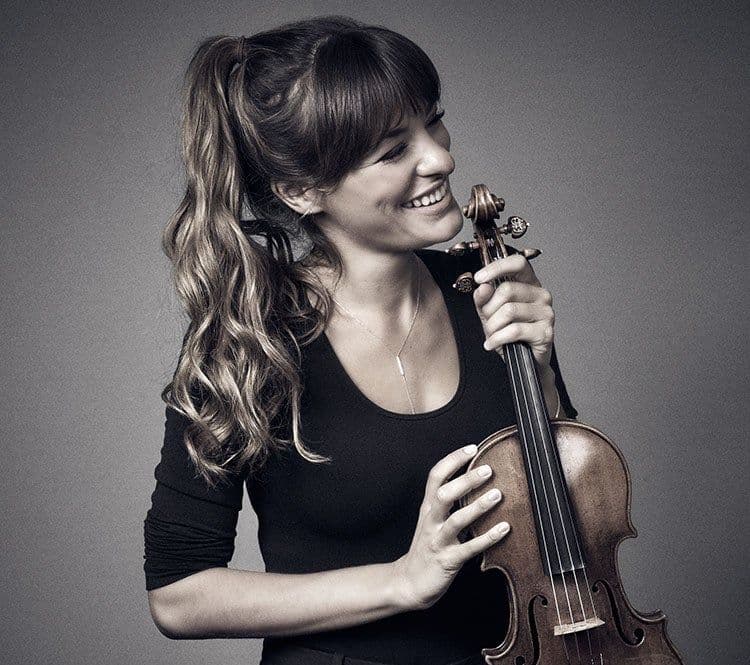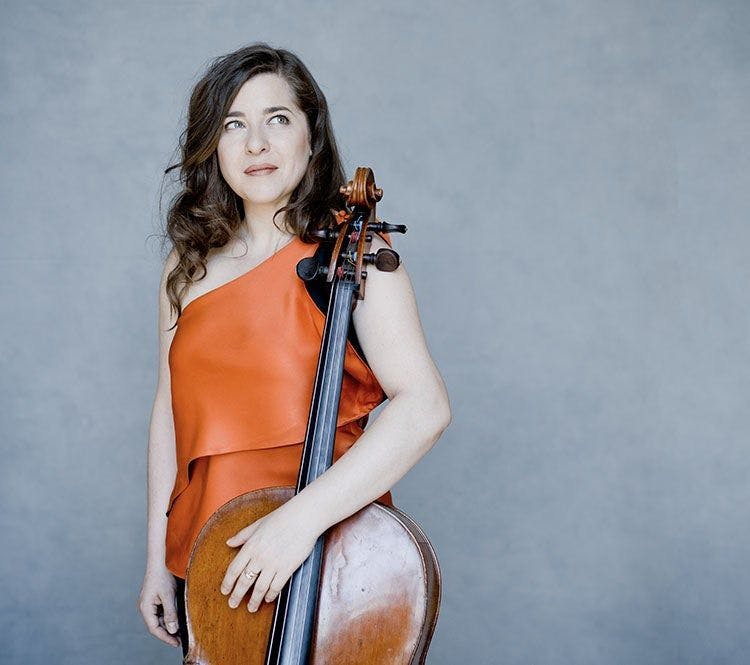Anna Clyne was born in London in 1980 and resides in the Hudson Valley in upstate New York. She is a Grammy-nominated composer as well as a choreographer, filmmaker, performance artist, and cellist. She was educated at the University of Edinburgh (B.M.) and the Manhattan School of Music (M.A.). She has won many prizes and commissions, including the co-commission for Stride from the Australian Chamber Orchestra, the Lausanne Chamber Orchestra, the River Oaks Chamber Orchestra (Houston, Texas), and the Scottish Chamber Orchestra. The work had its world premiere in Wollongong, Australia, with the Australian Chamber Orchestra, and its U.S. premiere with the River Oaks Chamber Orchestra, both in 2020.
The year 2020 marked the 250th anniversary of the birth of Ludwig van Beethoven, which was the inspiration for many compositions in a variety of genres. Clyne's Stride, for string orchestra, is based on selected rhythms, themes and harmonies from Beethoven's Piano Sonata No. 8 in C minor, Op. 13, popularly known as the "Sonata Pathétique." The work is in one movement, with sections that echo the general character of Beethoven's three individual movements. As in the piano sonata, a solemn introduction introduces a series of energetic motives. The work's title and most prominent theme are based on the wide leaps in the bass line of Beethoven's first movement. This octave-spanning technique, which is also common in jazz music's popular "stride piano" style, provides a driving rhythm that recurs multiple times, often against scales and imitative fragments. The second section, despite some dissonant and energetic passages, has a more yearning and peaceful melody, much like Beethoven's second movement. A rondo corresponds to Beethoven's third movement, leading to an energetic conclusion. Stride has received acclaim for its blend of recognizable references to the Beethovenian original as well as for the intriguing contemporary techniques that have helped make it a favorite with audiences.
Max Bruch (1838-1920) was born in Cologne, Germany, where his musical studies began at an early age. His wealthy musical family encouraged his efforts, and he studied with the famous German composers Ferdinand Hiller and Karl Reinecke while still a young man. Bruch wrote over 200 compositions, while also accepting many conducting engagements and a decade-long professorship in Berlin. This concerto is a highlight of German Romantic concerto composition.
Bruch began composing the Violin Concerto No. 1 in G minor, Op. 26, in 1864. By 1865, he had met the outstanding Hungarian violin virtuoso Joseph Joachim (1831-1907), who was to become an important mentor and performer for Bruch, Brahms and many other contemporary composers. After consulting Joachim and other violinists, and making many revisions to the concerto, Bruch conducted the final version in Bremen in 1868, with Joachim as soloist. Although he wrote two additional concertos and other works for solo violin and orchestra, it was the first concerto that brought him the most fame.
The three-movement concerto is performed without breaks. A low timpani roll begins the first movement, followed by a soft entrance in the woodwinds. By the sixth measure, the solo violin enters with a dramatic upward sweep. The delicate dynamics of this section are succeeded by the full orchestra's entrance. A persistent rhythmic pattern (quarter note, eighth rest, eighth note, quarter note) appears in the lower strings and winds. It then forms a consistent backdrop for much of the movement, even appearing in the solo part. The movement is in sonata form, with two main themes, but lacks a lengthy recapitulation of the themes ˗ hence Bruch's designation of it as a prelude. A beautiful theme for the soloist leads into the equally beautiful adagio movement, which is in sonata form with three main themes. The third movement is also in sonata form, with two exciting themes introduced by the orchestra. There are slight indications of Hungarian musical traditions in the solo violin part, likely a nod to Joachim. Bruch's use of sonata form in each movement is unusual and innovative. It was unfortunate for Bruch's later fortunes that he sold the copyright on this work to his publishers at a very low price, which meant that its tremendous popularity did not benefit him financially in later life. Bruch did not consider this concerto to be his best work, but its reputation and success certainly eclipsed that of all his other compositions.
Like Max Bruch, Felix Mendelssohn-Bartholdy (1809-1847) came from a wealthy musical family and had become a successful composer while in his teens. He traveled widely, including an extended trip to Scotland in July 1829 with a friend. They even visited Sir Walter Scott, whose romantic novels of Scotland were extremely popular. They found him to be "grouchy and distracted," but nothing spoiled their enthusiastic letters home. While visiting the ruins of Holyrood Abbey, where Mary Stuart had been crowned Queen of the Scots, Mendelssohn was inspired to jot down sixteen measures of a solemn melody which became the introduction to his Symphony No. 3 in A minor, Op. 56, the so-called "Scottish Symphony."
Despite his early start on the symphony, Mendelssohn worked on it only intermittently for the next few years. Although published as the third symphony, it is actually the last of the five to be composed; the final version was completed in 1841. Mendelssohn conducted its premiere at the Leipzig Gewandhaus in March 1842 and the English premiere in 1843. The score is dedicated to his friends Queen Victoria and Prince Albert.
Mendelssohn wanted the symphony played without pause. Although written programs for instrumental music were common at the time, he preferred instead to let the audience imagine the beauty, ruggedness and history of Scotland. The first section portrays a number of different moods, from solemn to exhilarated. In the recapitulation, the cellos introduce a new melody, while other instruments repeat earlier themes. Although Mendelssohn was said to dislike "bagpipes and folk music," the lively scherzo has a Scottish feel, with horn calls and a persistent rhythmic figure reminiscent of the "Scottish snap" (a syncopated short, accented note followed by a longer one.) This fleet and exciting section leads to a beautiful adagio melody for strings and woodwinds, alternating with strongly rhythmic passages for full orchestra. The finale has two main themes for the orchestra, followed by a passage in which the horns proclaim a stirring melody. The climactic ending uses the entire orchestra to stunning effect. The "Scottish Symphony" is among Mendelssohn's most popular works.
—Mary Black Junttonen, MSU Music Librarian Emeritus




